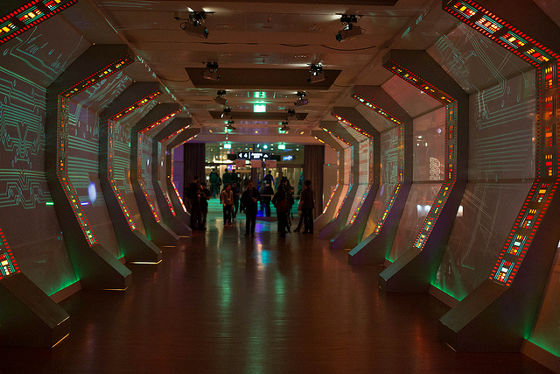NASA's related research reveals that long space travel destroys the passenger's stomach and causes cancer

By Duchess Flux
The influence on various human bodies caused by 'Long living in outer space' which is still unknown to human beings is gradually becoming obvious. In a study conducted under the auspices of NASA, the possibility that the digestive organs such as the stomach and the intestines are damaged by causing a long stay in the deep space far from the earth, causing the cancer is becoming apparent .
Animal Study Suggests Deep Space Travel May Significantly Damage GI Function in Astronauts | Georgetown University Medical Center | Georgetown University
https://gumc.georgetown.edu/news/Animal-Study-Suggests-Deep-Space-Travel-May-Significantly-Damage-GI-Function-in-Astronauts
NASA - funded study says long trips in space could destroy astronauts' stomachs and cause cancer - CNN
https://edition.cnn.com/2018/10/02/us/nasa-study-deep-space-travel-trnd/index.html
In the deep space far from the Earth, radioactive " cosmic rays " with high energy are flying from and around the universe. A research team at the Georgetown University Medical Center researched the influence on the internal organs caused by long-time irradiation of the mouse by reproducing the cosmic ray in a pseudo manner by using the heavy ion ion " heavy ion ".
As a result of the experiment, it was confirmed that the digestive tract of the mouse was permanently damaged by exposure to a low dose cosmic ray for a long time, and it was confirmed that it was deteriorated to a state where even if ingestion of food it can not absorb nutrients about. In addition, it seems that the occurrence of cancerous tumor was seen in the intestine.
This result highlights that there is a high possibility that the astronaut's gastrointestinal tract will suffer great damage if it continues to be exposed to cosmic rays for a long period of time during long-term space navigation. Kamal Datta, executive vice president of Georgetown University NASA Specialized Center of Research, commented on the results that "In short journeys such as returning to the moon, astronauts do not receive this level of damage, but the real question is, It is continuous damage which is received by long navigation. "
In the lunar exploration program NASA conducted around 1970, the time it took the astronauts to travel back and forth was about three days. On the other hand, it is said that a journey to Mars, which is located on the outside of the earth in the solar system and has an extraordinary distance from the moon, takes nine months, so far different environments and events in different dimensions in the universe It is certain that we are awaiting astronauts.

By Kevin Gill
One of the concerns raised by the research team is that there is no treatment yet to restore the tissues of organs damaged by radiation. Also, it is difficult to have a protection mechanism to block the cosmic rays that completely pour down on the spacecraft, so unless some countermeasures are prepared, the astronaut towards Mars will suffer great damage to health It is inevitable.
In addition, even if a cancer or the like is found, it is considered to be very difficult to perform a surgical operation in outer space and remove the part of the problem. Unlike the ground, in space where there is almost no gravitational force, the problem of continuing to fly without falling to the floor even if body fluids and blood are popped out is predicted. In addition, by living long in the zero gravity environment, the organ differs from the usual place It is considered to have an influence such as being located in.
What is the difficulty of 'surgical operation during space navigation' approaching human beings aiming for extraterrestrial planets? - GIGAZINE

Whether it should be said, the appearance of many difficulties waiting in the journey to Mars is gradually becoming clear. Datta says, "It is important to understand the influence on the human body beforehand so that everything can be done to protect future space travelers."

Related Posts:
in Science, Posted by darkhorse_log






